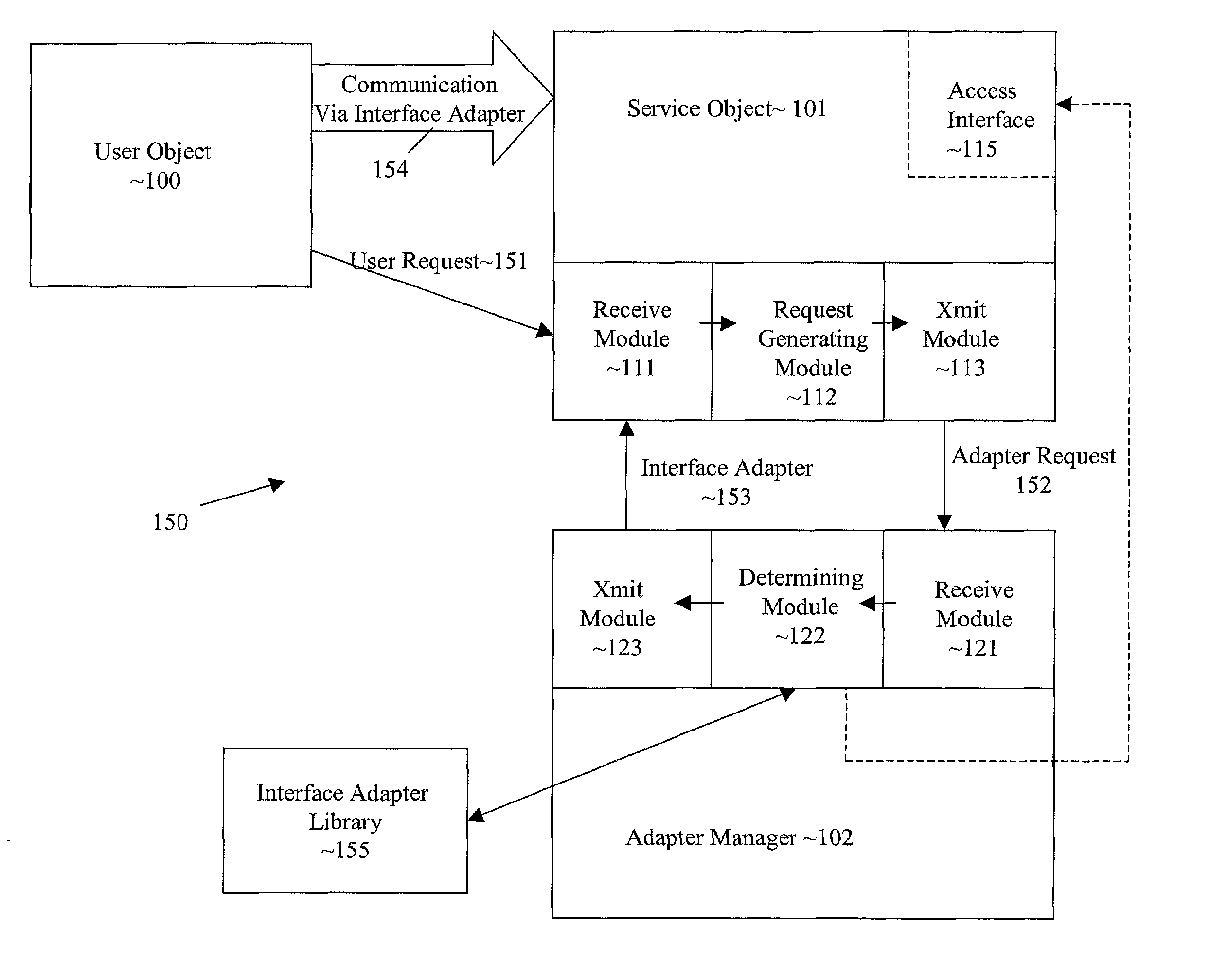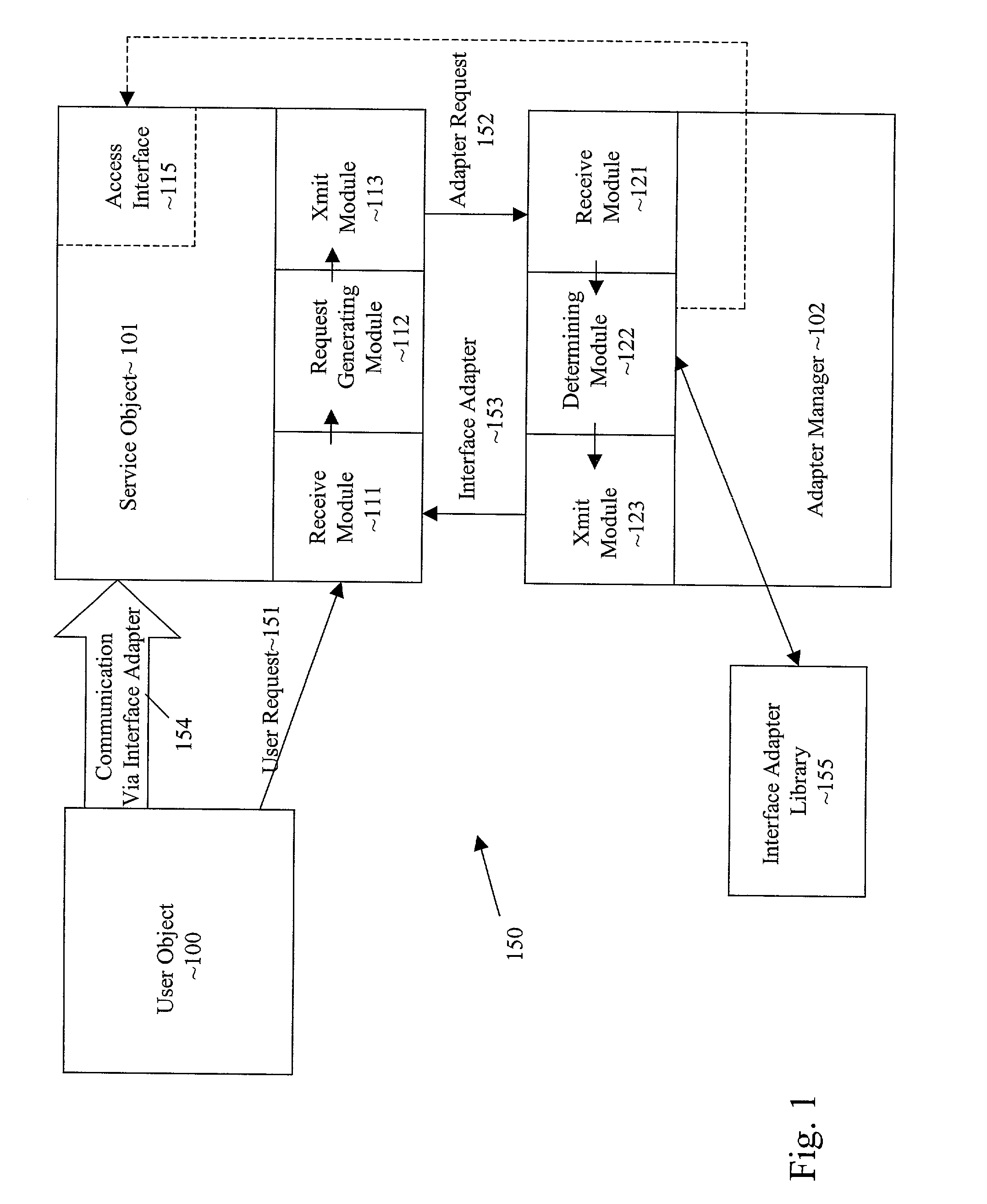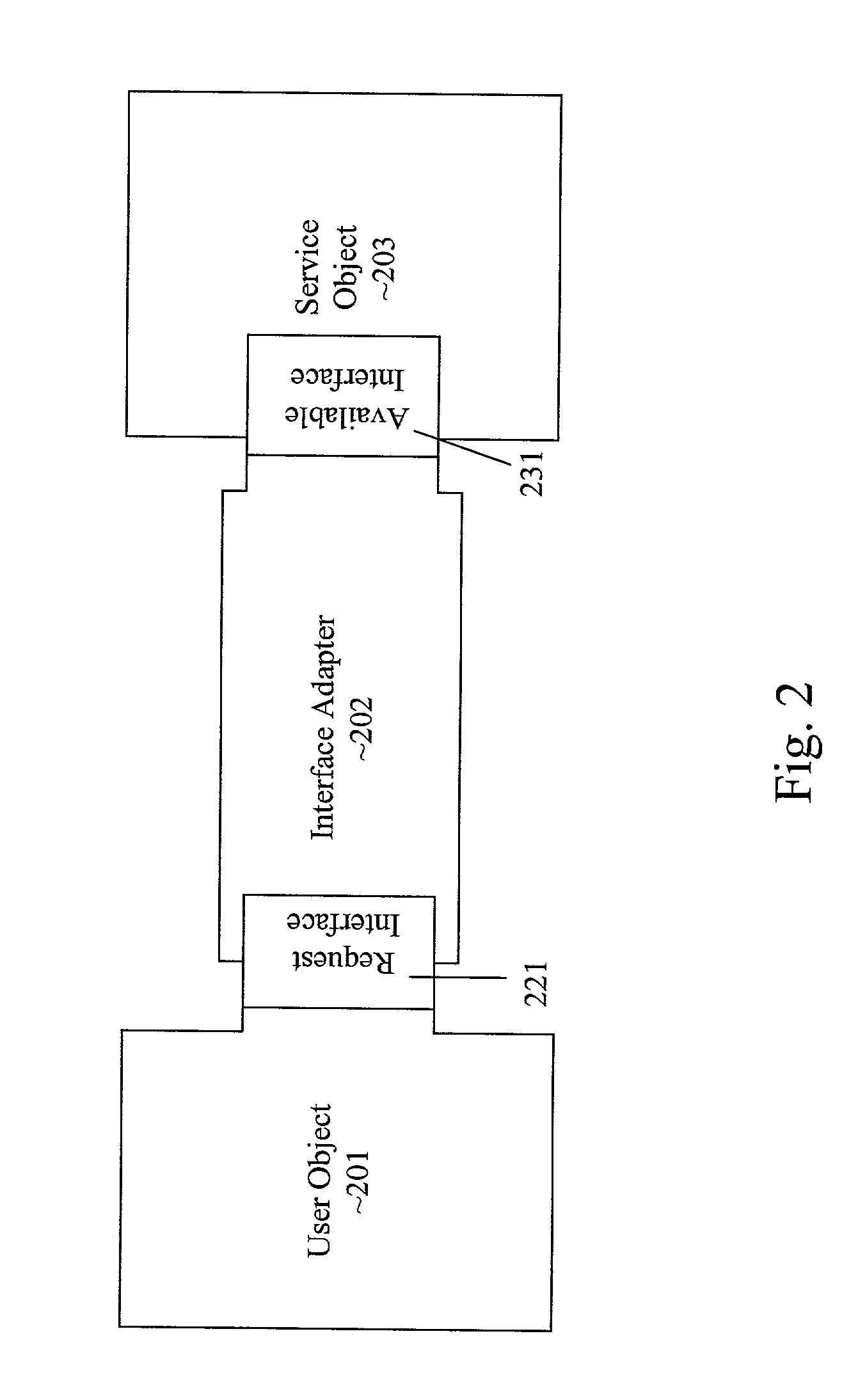Dynamic interface aggregation on demand
a dynamic interface and aggregation technology, applied in the field of communication, can solve the problems of ever more complex, most uneconomical and very difficult writing of a single program
- Summary
- Abstract
- Description
- Claims
- Application Information
AI Technical Summary
Benefits of technology
Problems solved by technology
Method used
Image
Examples
Embodiment Construction
[0050]FIG. 1 shows a system 150 for dynamic interface generation, according to an embodiment of the invention. System 150 allows a user object 100 to access a service object 101 through an interface adapter provided by an adapter manager 102. Hence, when user object 100 demands an interface that is not offered by service object 101 in an access request, service object 101 dynamically obtains an interface adapter from adapter manager 102 that allows user object 100 and service object 101 to communicate.
[0051]Hence with system 150, user object 100 is provided with the necessary interface adapter allowing user object 100 to actually access service object 101 even in cases where service object 101 did not initially offer the interface demanded by user object 100. Since the interface adapter is delivered by adapter manager 102 on demand in a runtime environment, it is no longer necessary that service object 101 provide all possible interfaces for all possible user objects accessing servi...
PUM
 Login to View More
Login to View More Abstract
Description
Claims
Application Information
 Login to View More
Login to View More - R&D
- Intellectual Property
- Life Sciences
- Materials
- Tech Scout
- Unparalleled Data Quality
- Higher Quality Content
- 60% Fewer Hallucinations
Browse by: Latest US Patents, China's latest patents, Technical Efficacy Thesaurus, Application Domain, Technology Topic, Popular Technical Reports.
© 2025 PatSnap. All rights reserved.Legal|Privacy policy|Modern Slavery Act Transparency Statement|Sitemap|About US| Contact US: help@patsnap.com



